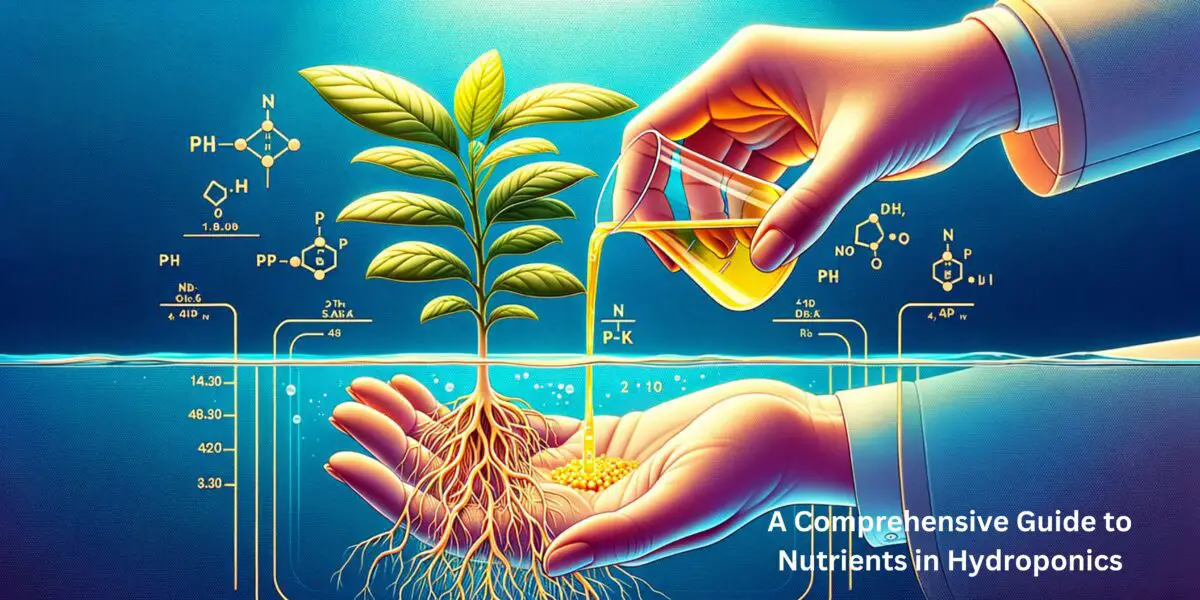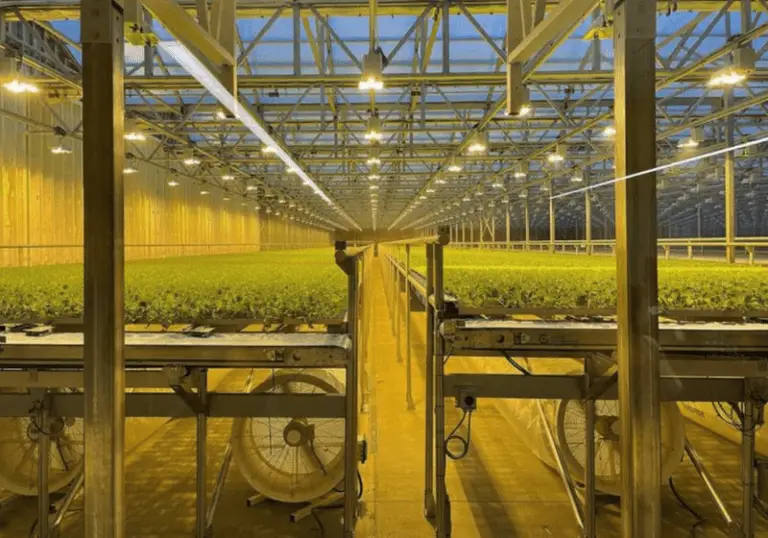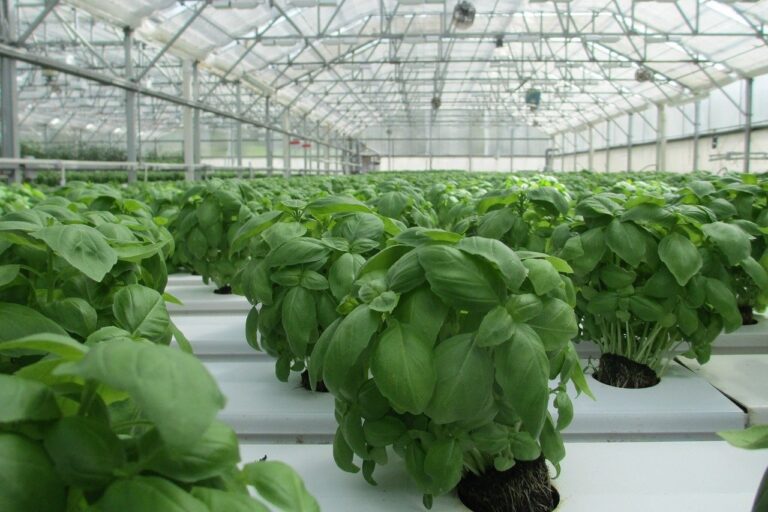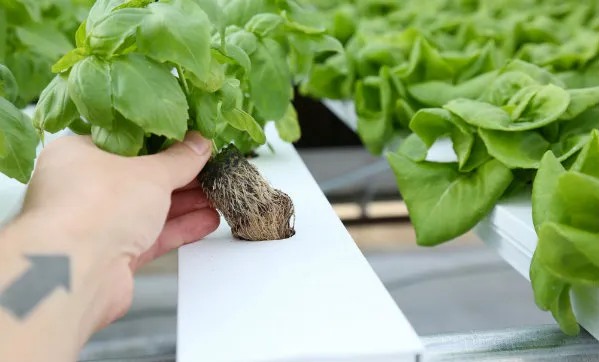Understanding NPK: A Comprehensive Guide to Nutrients in Hydroponics
Table of Contents
Nutrient Formulations: Different types of nutrient solutions available for hydroponic cultivation
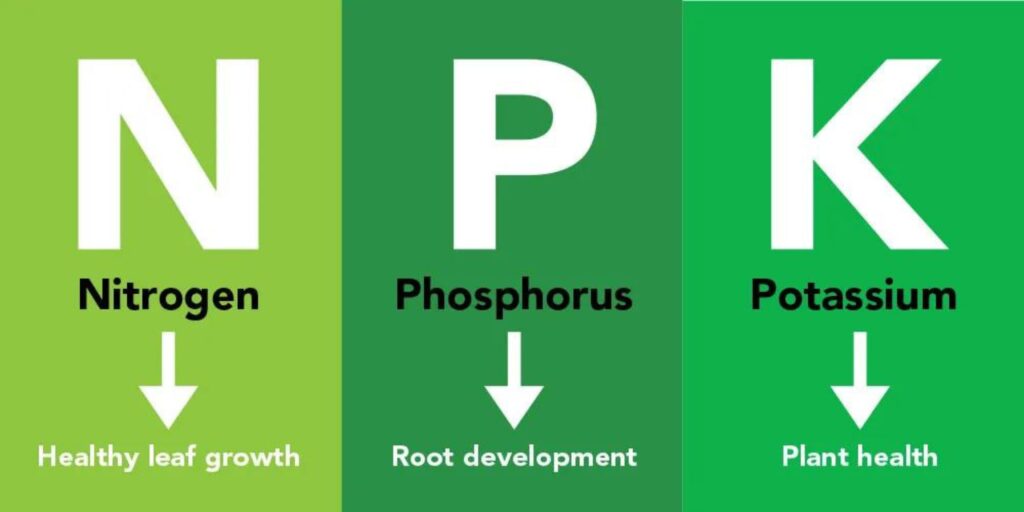
Hydroponic cultivation offers a wide range of nutrient solutions that can be customized to meet the specific needs of different plants. These nutrient formulations contribute to the optimal growth and development of plants in a soilless environment. Some of the most common types of nutrient solutions used in hydroponics include liquid fertilizers, powdered nutrient mixes, and organic nutrient options.
Liquid fertilizers are popular among hydroponic growers due to their ease of use and ability to dissolve quickly, providing an immediate source of nutrients to the plants. These solutions are usually pre-mixed and come in concentrated forms that can be diluted according to the specific requirements of each crop. Powdered nutrient mixes, on the other hand, offer a longer shelf life and can be stored for extended periods without the risk of degradation. They are typically mixed with water before application to provide a complete range of essential nutrients to the plants. Lastly, organic nutrient options are sought-after by those who prioritize sustainability and natural farming practices. These solutions are derived from organic sources such as fish emulsion, seaweed extracts, and compost teas, providing plants with a balanced blend of nutrients while minimizing environmental impact.
Each type of nutrient formulation has its own advantages and considerations, and the choice ultimately depends on factors such as crop type, growth stage, and grower preferences. It is recommended that growers consult with experts or reference reputable sources to determine the most suitable nutrient solution for their hydroponic setup. With the right formulation, plants can thrive and produce the desired yields, ensuring a successful and rewarding hydroponic cultivation journey.
• Liquid fertilizers are popular for their ease of use and quick nutrient absorption.
• Powdered nutrient mixes have a longer shelf life and can be stored for extended periods.
• Organic nutrient options prioritize sustainability and minimize environmental impact.
• The choice of nutrient formulation depends on factors such as crop type, growth stage, and grower preferences.
• Consultation with experts or reputable sources is recommended to determine the most suitable solution.
Nutrient Ratios: Balancing NPK ratios for optimal plant growth and yield in hydroponic systems
One of the key aspects of successful hydroponic cultivation is achieving the right nutrient ratios to promote optimal plant growth and yield. Balancing the ratios of nitrogen, phosphorus, and potassium (NPK) is essential for providing plants with the necessary elements for healthy development.
In hydroponic systems, the nutrient solution serves as the primary source of plant nutrition, replacing the need for traditional soil-based nutrients. By controlling the nutrient ratios in the solution, growers can customize the composition to meet the specific needs of different plants and growth stages.
The ideal NPK ratio will vary depending on the type of crop being cultivated and its growth stage. For example, leafy greens such as lettuce and spinach benefit from a higher nitrogen content to promote leaf growth, while fruiting crops like tomatoes and peppers require a higher phosphorus and potassium ratio to support flower and fruit formation.
Achieving the optimal NPK ratios involves precise measurements and careful adjustments. Growers can utilize various commercially available nutrient formulations specifically designed for hydroponic cultivation, which provide the recommended NPK ratios for different crops. Additionally, regular monitoring of nutrient levels and periodic adjustments based on plant needs are necessary to ensure a balanced and well-functioning hydroponic system.
By maintaining the right nutrient ratios in hydroponic systems, growers can enhance the overall health and productivity of their plants. However, it’s important to note that nutrient ratios alone are not the sole determinant of growth and yield. Other environmental factors, such as pH levels, temperature, and lighting, also play crucial roles in successful hydroponic cultivation.
In the next section, we will explore how plants absorb and utilize nutrients in a hydroponic environment, further understanding the intricacies of nutrient uptake for optimal plant development.
• Balancing the ratios of nitrogen, phosphorus, and potassium (NPK) is essential for promoting optimal plant growth and yield in hydroponic systems.
• The nutrient solution in hydroponics serves as the primary source of plant nutrition, replacing traditional soil-based nutrients.
• Customizing the NPK ratio in the nutrient solution allows growers to meet the specific needs of different plants and growth stages.
• Different crops have varying ideal NPK ratios based on their type and growth stage. For example, leafy greens benefit from higher nitrogen content, while fruiting crops require more phosphorus and potassium for flower and fruit formation.
• Achieving optimal NPK ratios requires precise measurements, adjustments, and utilization of commercially available nutrient formulations designed for hydroponic cultivation.
• Regular monitoring of nutrient levels and periodic adjustments based on plant needs are necessary for a balanced hydroponic system.
• Maintaining proper nutrient ratios enhances overall health and productivity in hydroponic plants but does not solely determine growth and yield. Other environmental factors also play crucial roles such as pH levels, temperature, and lighting.
Nutrient Uptake: How plants absorb and utilize nutrients in a hydroponic environment
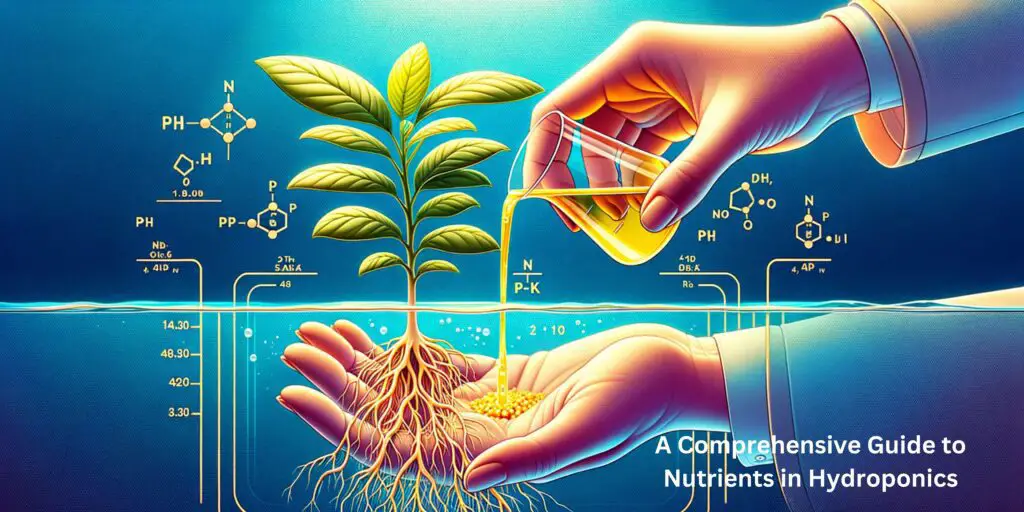
In a hydroponic environment, plants have the ability to absorb and utilize nutrients in a highly efficient manner. Unlike traditional soil-based cultivation, where plants have to search for nutrients in the surrounding soil, hydroponics involves delivering essential nutrients directly to the roots. This allows plants to access nutrients more readily and in a controlled manner.
One key factor in nutrient uptake is the role of water. In hydroponic systems, plants are typically grown in a substrate or directly in water, providing continuous access to moisture and dissolved nutrients. This allows plants to uptake nutrients more effectively, as they are dissolved and readily available for absorption. Additionally, the roots of hydroponically-grown plants are often exposed to a higher concentration of oxygen, further enhancing nutrient absorption.
Furthermore, nutrient absorption in hydroponics is influenced by the pH of the nutrient solution. Different nutrients have different optimal pH ranges for uptake, and maintaining the appropriate pH levels ensures that plants can effectively absorb the necessary nutrients. It is essential to regularly monitor and adjust the pH of the nutrient solution to optimize nutrient uptake and avoid deficiencies or toxicities.
Overall, understanding how plants absorb and utilize nutrients in a hydroponic environment is crucial for successful cultivation. By providing direct access to nutrients, maintaining proper pH levels, and optimizing conditions for nutrient absorption, hydroponics presents an efficient and effective way for plants to fulfill their nutritional needs and thrive.
• In hydroponic systems, nutrients are delivered directly to the roots of plants, allowing for efficient absorption.
• Water plays a crucial role in nutrient uptake in hydroponics, as it provides continuous access to moisture and dissolved nutrients.
• The roots of hydroponically-grown plants are often exposed to higher levels of oxygen, enhancing nutrient absorption.
• Maintaining the appropriate pH levels in the nutrient solution is essential for optimal nutrient uptake.
• Regular monitoring and adjustment of pH levels can help prevent deficiencies or toxicities.
• Hydroponics offers a highly efficient and effective way for plants to fulfill their nutritional needs and thrive.
Certainly! Below is a simple table summarizing key information about NPK (Nitrogen, Phosphorus, and Potassium) and their role in hydroponics:
| Nutrient | Function | Importance in Hydroponics |
|---|---|---|
| Nitrogen (N) | Essential for leaf and stem growth, protein synthesis, and overall plant vigor. | Crucial for promoting vegetative growth in hydroponic plants. Maintains healthy and lush green foliage. |
| Phosphorus (P) | Plays a key role in energy transfer and storage, root development, and flowering. | Critical for the development of strong roots and the production of flowers and fruits in hydroponic systems. |
| Potassium (K) | Regulates various physiological processes, enhances disease resistance, and promotes overall plant health. | Vital for the overall health and resilience of hydroponic plants. Enhances stress tolerance and nutrient uptake. |
Understanding NPK Ratios in Hydroponics:
- Different growth stages may require specific NPK ratios. For example, a higher ratio of nitrogen is often beneficial during the vegetative phase, while increased phosphorus and potassium are crucial during flowering and fruiting.
- The ideal NPK ratio may vary for different plant species, so it’s important to tailor nutrient solutions accordingly.
- Monitoring and adjusting nutrient concentrations based on plant growth stages help optimize hydroponic system performance.
Common NPK Sources in Hydroponics:
- Nitrogen: Nitrate-based fertilizers, ammonium-based fertilizers.
- Phosphorus: Phosphate-based fertilizers, phosphoric acid.
- Potassium: Potassium nitrate, potassium sulfate, potassium hydroxide.
Tips for Managing NPK in Hydroponics:
- Regularly monitor nutrient levels using an EC (electrical conductivity) meter.
- Adjust nutrient concentrations based on the growth stage of the plants.
- Keep pH levels in the optimal range (typically 5.5 to 6.5) for optimal nutrient absorption.
- Consider supplementing with micronutrients to ensure a well-rounded nutrient profile.
Remember, successful hydroponic cultivation involves a balance of NPK, along with other essential micronutrients, to meet the specific needs of the plants throughout their life cycle.
Nutrient Deficiencies: Identifying and correcting nutrient deficiencies in
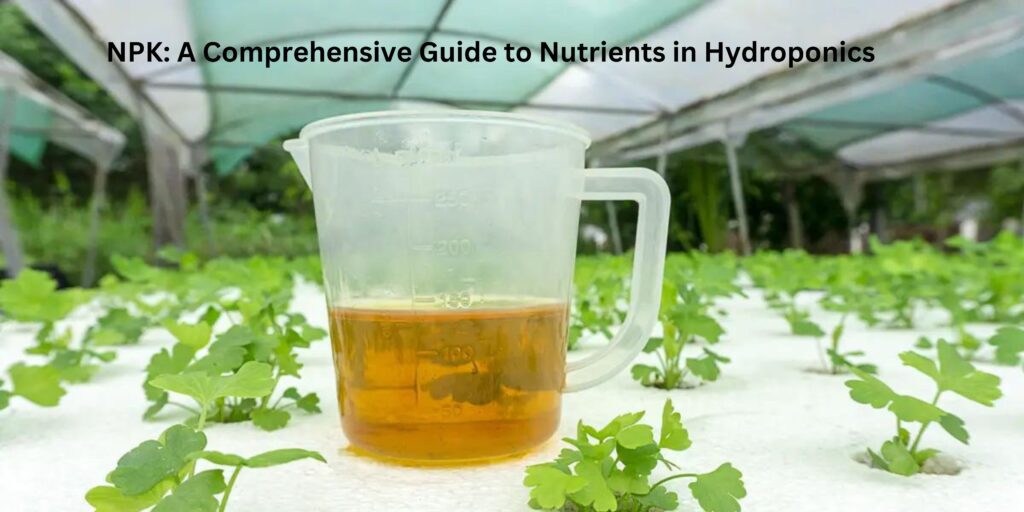
Nutrient deficiencies can significantly impact plant health and productivity in hydroponic systems. Identifying these deficiencies early on is crucial to provide the necessary corrective measures. One common nutrient deficiency in hydroponics is nitrogen deficiency, which can be easily identified by the yellowing of lower leaves and stunted growth.
To correct nitrogen deficiency, it is important to increase the availability of nitrogen to the plant. This can be achieved by adjusting the nutrient solution to include a higher concentration of nitrogen or by using nitrogen-rich fertilizers specifically formulated for hydroponic cultivation. Additionally, ensuring proper pH levels and conducting regular water tests can help prevent and correct nutrient deficiencies, as imbalances in pH can impede nutrient uptake.
Another essential nutrient for plant growth is potassium, and its deficiency can lead to reduced fruit quality, poor root development, and increased susceptibility to diseases. Symptoms of potassium deficiency include yellowing of leaf margins and necrosis of leaf edges. To rectify potassium deficiency, potassium-rich fertilizers such as potassium nitrate or potassium sulfate can be added to the nutrient solution. It is also vital to maintain a proper balance in the NPK ratio, as excessive levels of nitrogen and phosphorus can hinder potassium uptake. Regular monitoring and adjustment of nutrient levels are essential to prevent and correct potassium deficiencies in hydroponic systems.
In conclusion, early identification and prompt correction of nutrient deficiencies are pivotal in maintaining plant health and optimizing yield in hydroponic cultivation. By being vigilant and providing the necessary corrective measures, gardeners can minimize the negative impact of nutrient deficiencies and maximize the potential of their hydroponic gardens.
• Nitrogen deficiency can be identified by yellowing of lower leaves and stunted growth.
• Increase nitrogen availability by adjusting nutrient solution or using nitrogen-rich fertilizers.
• Proper pH levels and regular water tests are important to prevent and correct deficiencies.
• Potassium deficiency can lead to reduced fruit quality, poor root development, and increased susceptibility to diseases.
• Symptoms include yellowing of leaf margins and necrosis of leaf edges.
• Add potassium-rich fertilizers like potassium nitrate or potassium sulfate to the nutrient solution.
• Maintain a proper balance in the NPK ratio to avoid hindering potassium uptake.
• Regular monitoring and adjustment of nutrient levels are crucial for preventing and correcting deficiencies.
What are some common signs of nutrient deficiencies in plants?
Common signs of nutrient deficiencies in plants include yellowing or browning of leaves, stunted growth, leaf curling or distortion, and poor fruit or flower development.
How can I identify nutrient deficiencies in my hydroponic system?
Nutrient deficiencies can be identified by closely observing the symptoms exhibited by the plants, conducting regular water and nutrient testing, and comparing the results to known nutrient deficiency symptoms.
Can nutrient deficiencies be corrected in a hydroponic system?
Yes, nutrient deficiencies in a hydroponic system can be corrected by adjusting the nutrient solution, ensuring proper pH levels, and providing the deficient nutrient through foliar sprays or nutrient additives.
What should I do if I notice nutrient deficiencies in my hydroponic plants?
If you notice nutrient deficiencies in your hydroponic plants, it is important to first identify the specific nutrient that is deficient. Then, you can adjust the nutrient solution accordingly or supplement the deficient nutrient to address the issue.
Are there any specific nutrient ratios that are important for optimal plant growth in hydroponic systems?
Yes, balancing the NPK ratios (nitrogen, phosphorus, and potassium) is crucial for optimal plant growth and yield in hydroponic systems. Different plants may require different ratios, so it is important to research the specific nutrient needs of the plants you are growing.
How do plants absorb and utilize nutrients in a hydroponic environment?
In a hydroponic environment, plants absorb and utilize nutrients through their roots. The nutrient solution in the hydroponic system provides the necessary elements in a dissolved form, allowing the plants to absorb them more efficiently than in soil-based cultivation.
Can I use organic nutrient formulations in hydroponic systems?
Yes, organic nutrient formulations can be used in hydroponic systems. However, it is important to ensure that the organic nutrients are properly dissolved and compatible with the hydroponic setup to avoid clogging or nutrient imbalances.
How often should I test the nutrient levels in my hydroponic system?
It is recommended to regularly test the nutrient levels in your hydroponic system, at least once a week or as recommended by the nutrient manufacturer. This helps ensure optimal nutrient balance and allows for timely detection and correction of any deficiencies.

